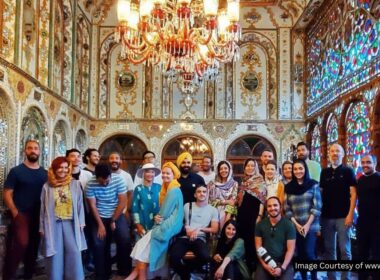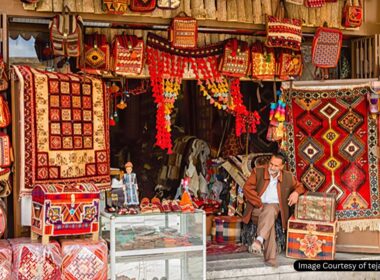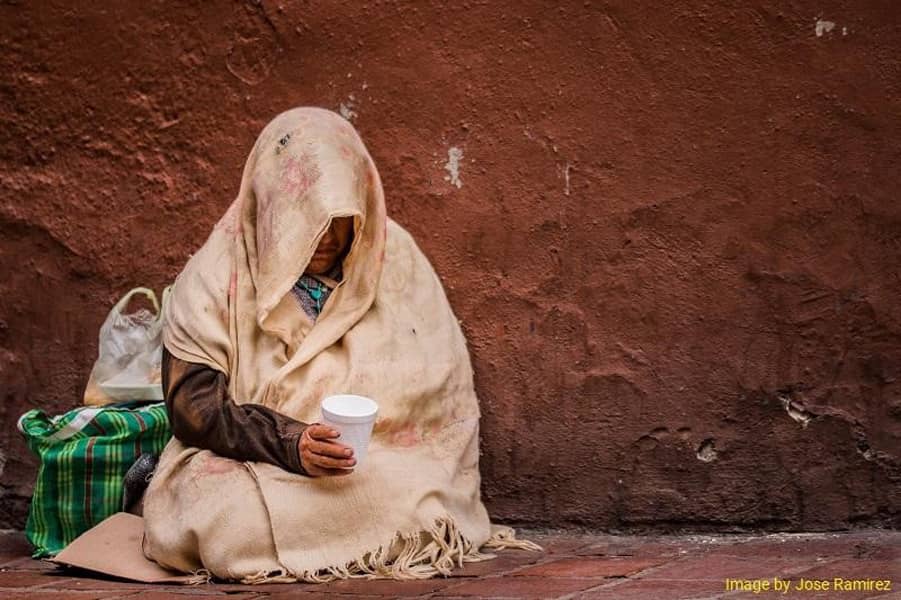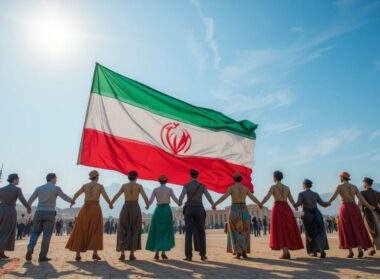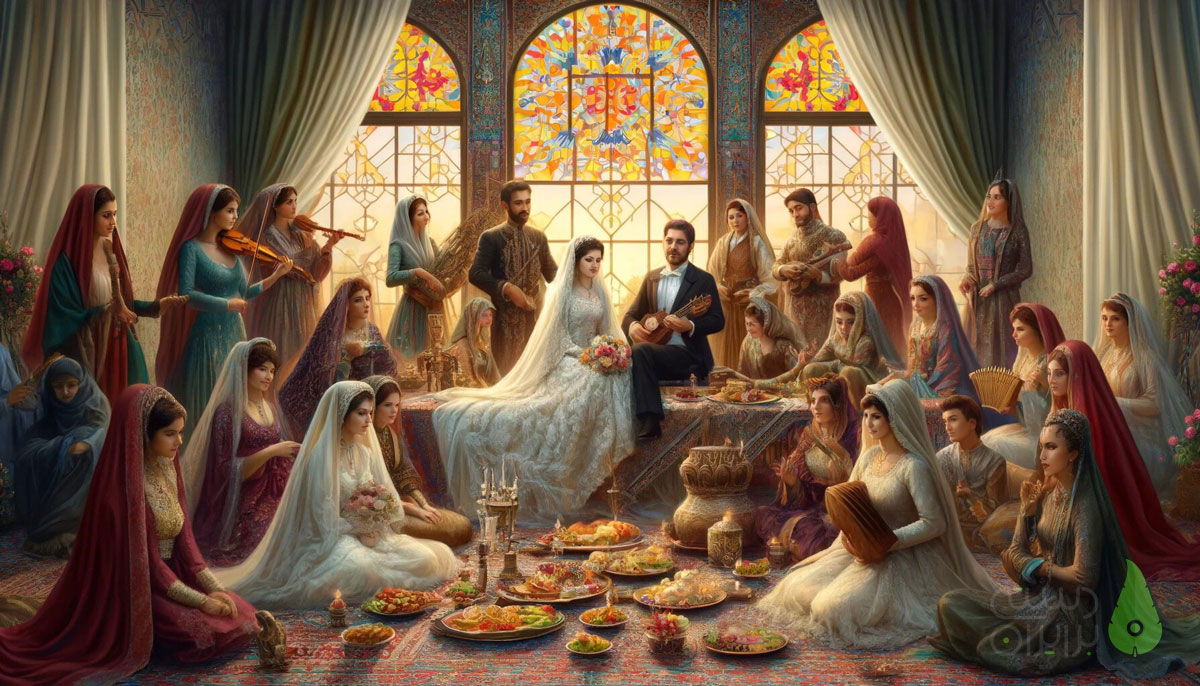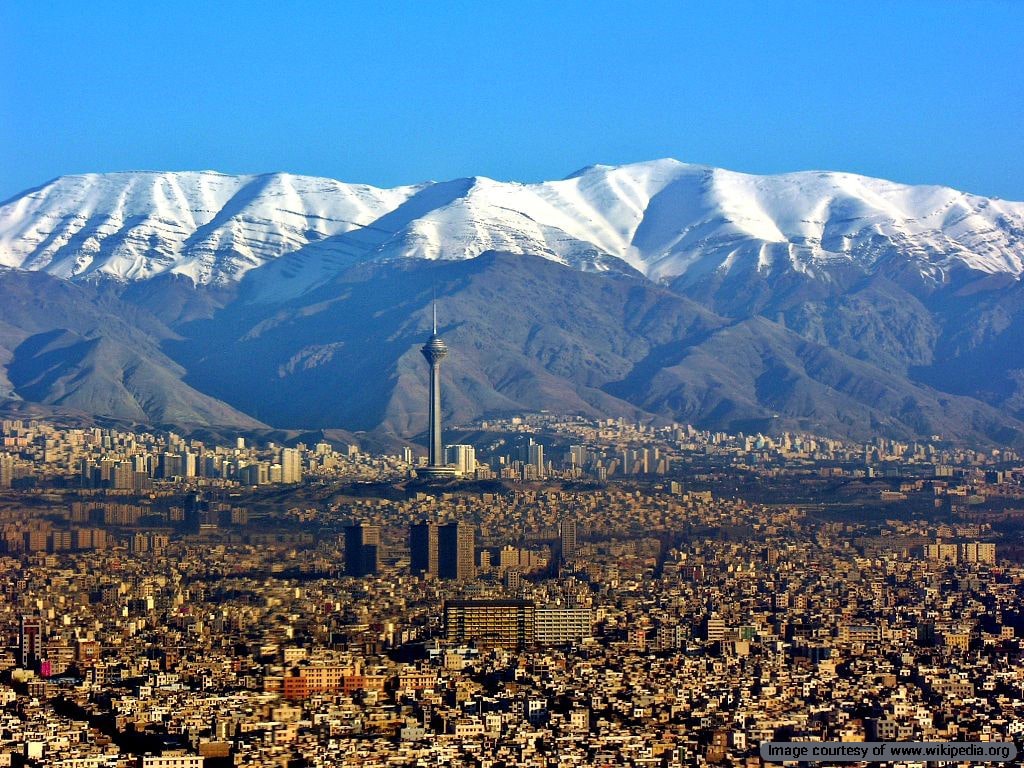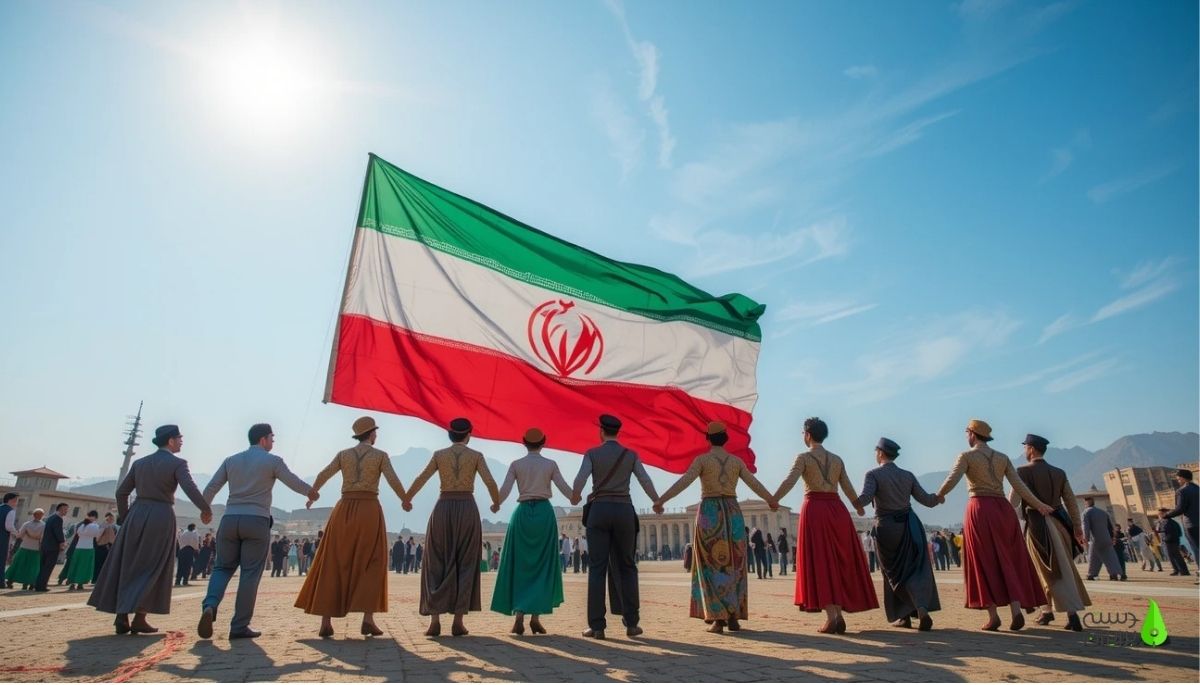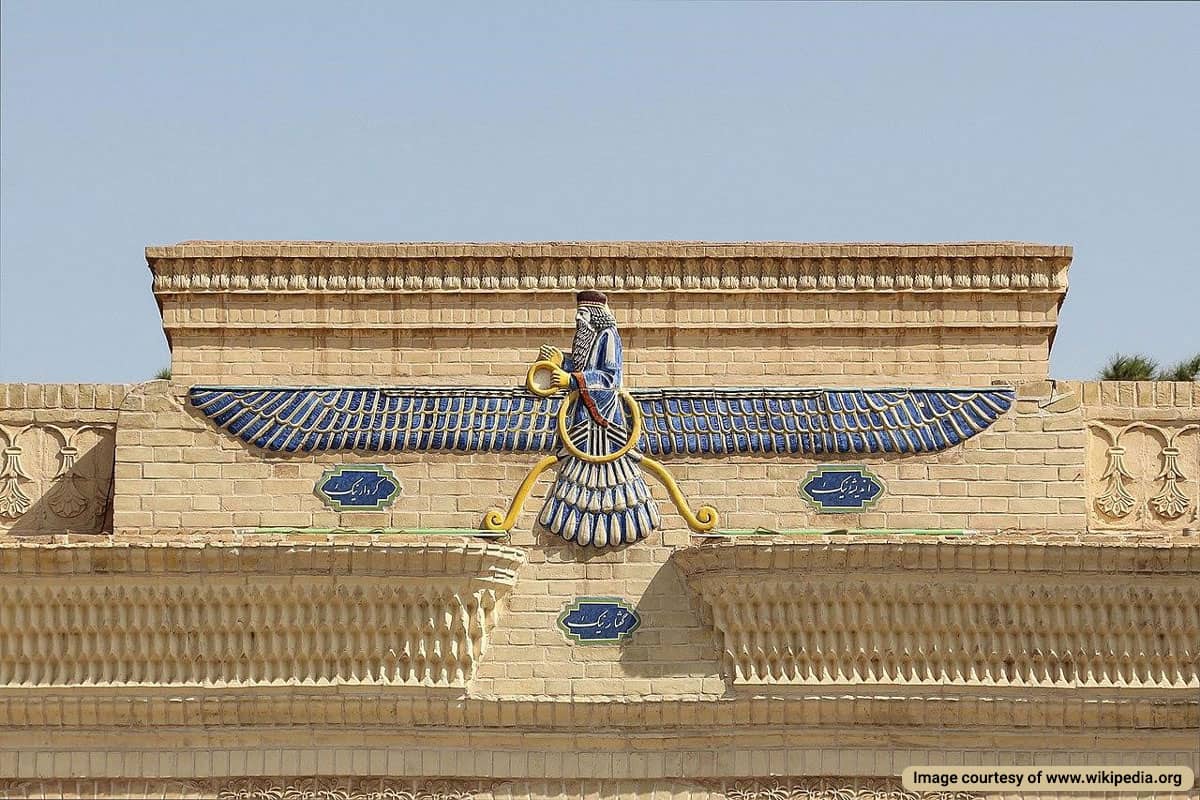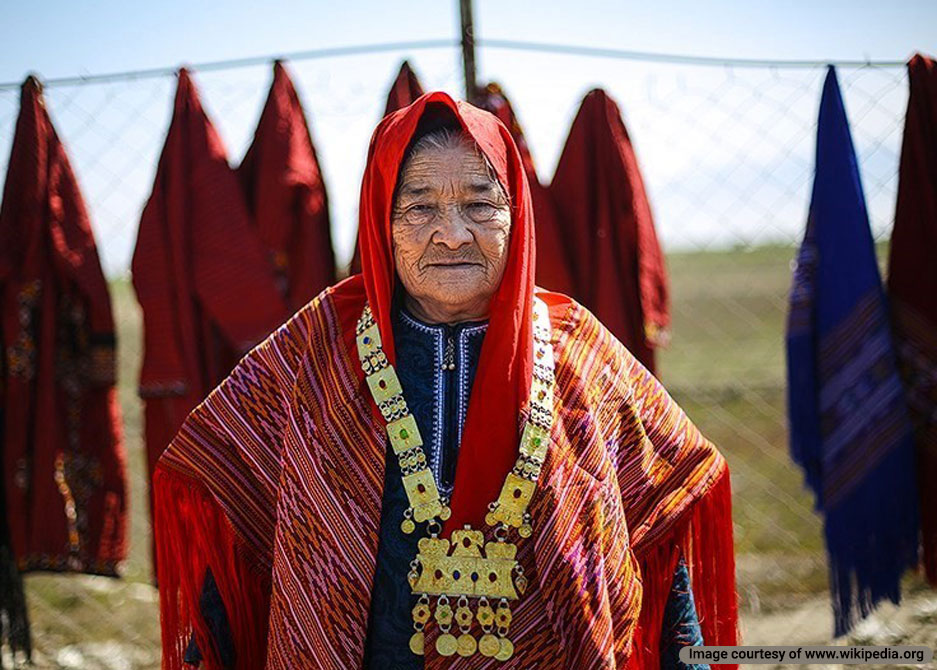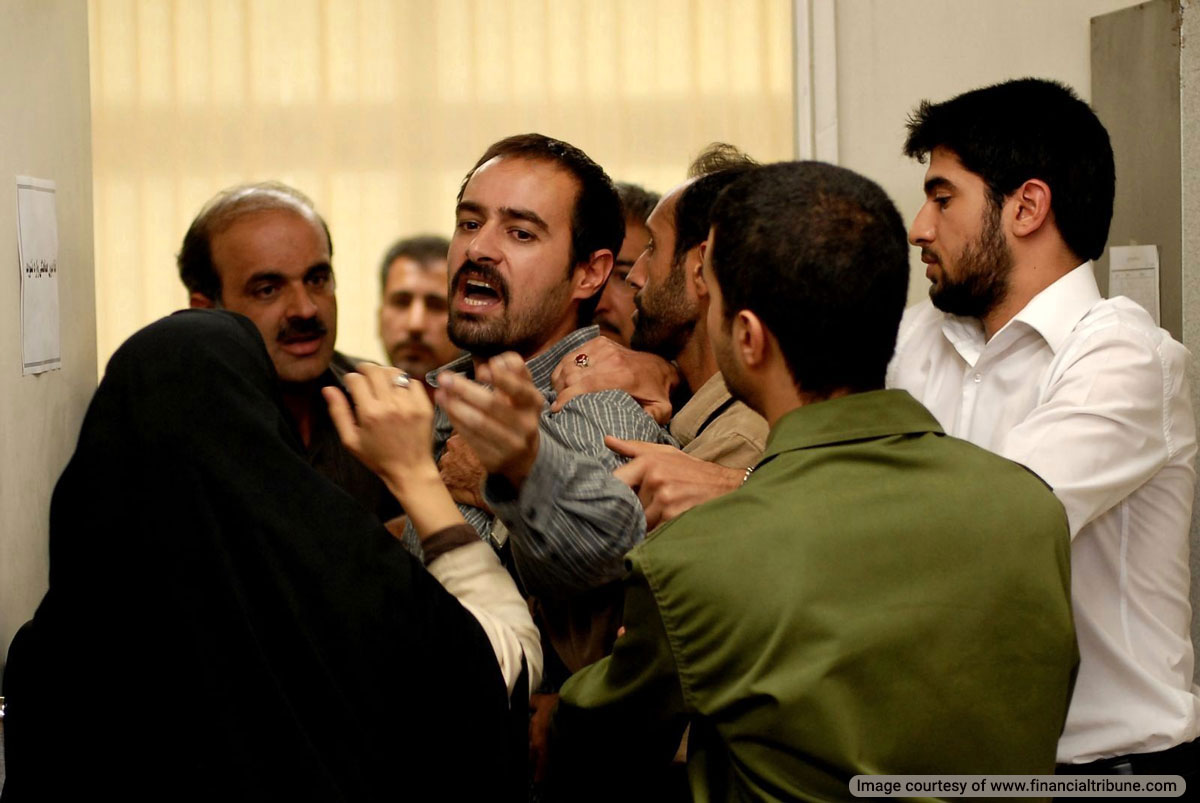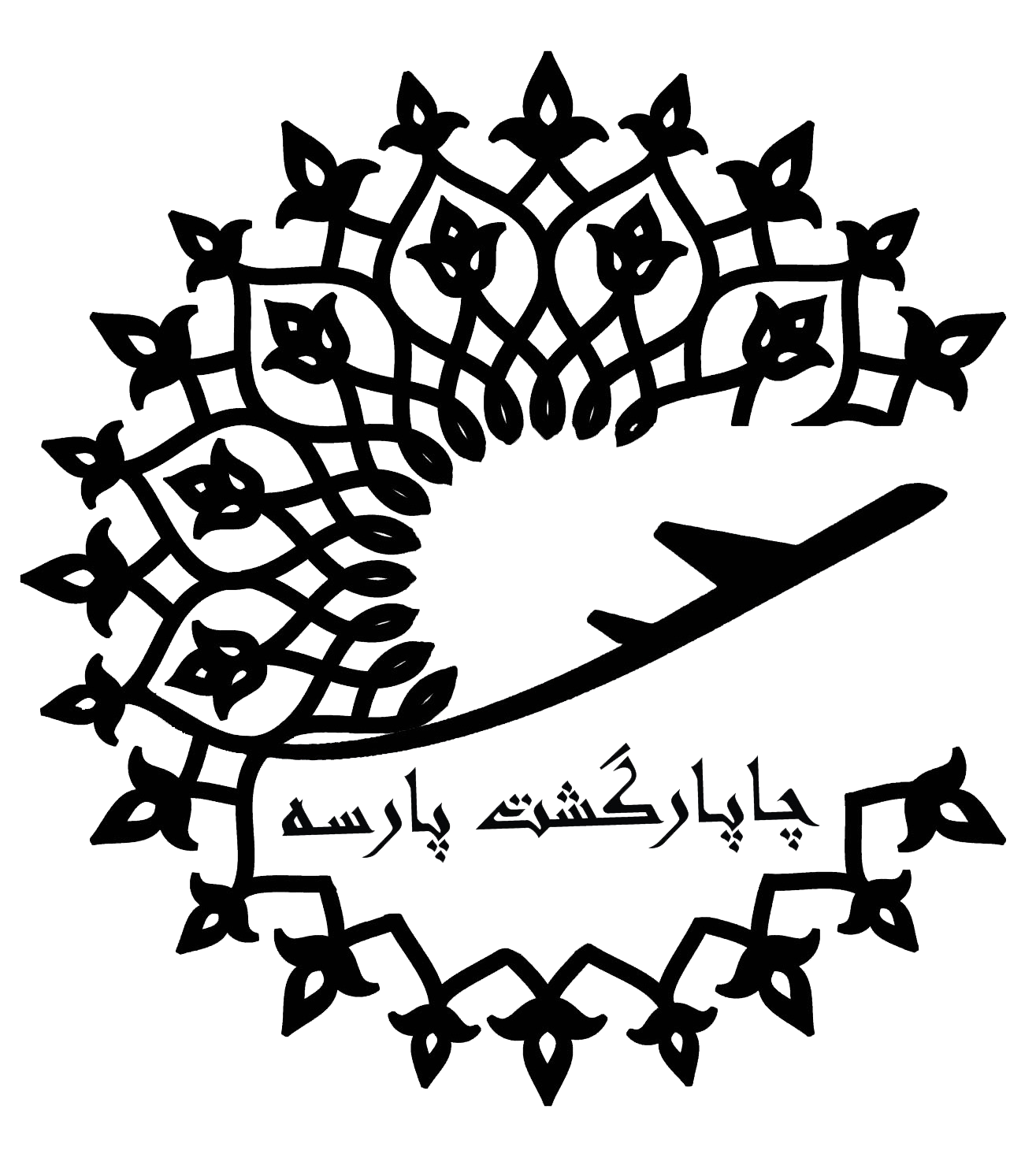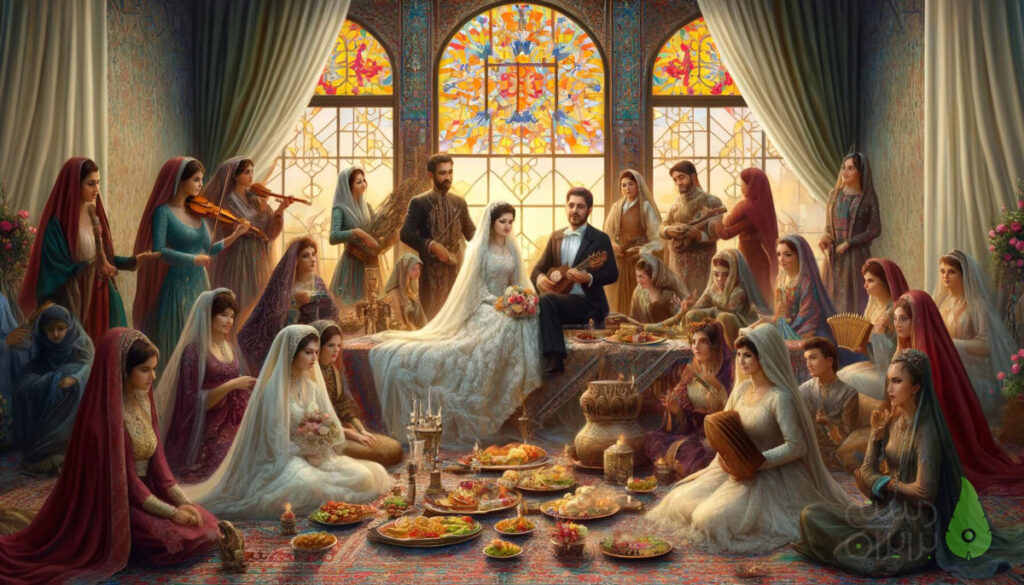
The Persian wedding is a beautiful blend of traditions and modern celebrations, reflecting the rich cultural heritage of Iran. From the intricate details of the Sofreh Aghd to the joyous celebrations of the Jashn e Aroosi, each tradition holds deep significance and adds to the event’s grandeur. Here, we explore 15 incredible Persian wedding customs that are an inseparable part of Iranian traditions.
First, we will cover ancient Persian wedding traditions practiced by Zoroastrians in Iran:
Ancient Zoroastrian Wedding Traditions
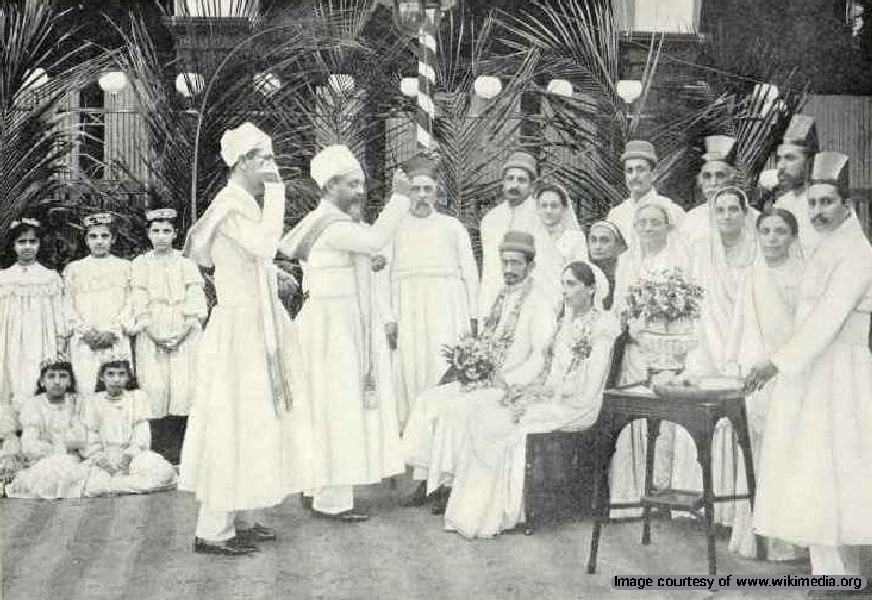
Zoroastrian weddings, deeply rooted in ancient traditions, are rich with rituals and symbolism. Here are some key elements:
Adrâvvûn (Betrothal Ceremony)
This ceremony involves the exchange of silver coins between the families of the bride and groom. It signifies the formal agreement to marry and is often performed shortly after the marriage is arranged.
Madasoro Divô (Lamp Lighting Ceremony)
Two lamps are lit in the homes of the bride and groom. Family members visit each other’s homes to place a silver coin on the lamp, symbolizing light and prosperity for the couple.
Âdarni (Gift Exchange):
Three days before the wedding, the groom’s family visits the bride’s home to present her with gifts such as clothes and jewelry. This ritual, known as Âdarni, is a significant part of the pre-wedding festivities.
Marriage Contract
The wedding ceremony begins with the signing of a marriage contract by the bride, groom, and their guardians. This contract outlines the rights and responsibilities of both parties and is a crucial legal and religious document.
Ceremonial Cord
During the wedding service, a fine scarf is held over the couple’s heads by married female relatives. Two crystallized sugar cones are rubbed together over the scarf to sweeten the couple’s life. The scarf is then sewn together to symbolize the uniting of the couple.
Crowning Ceremony
In ancient times, the bride and groom would wear crowns during the ceremony. This practice symbolized their new status as king and queen of their household.
White Attire
Both the bride and groom traditionally wear white, symbolizing purity and the sacredness of the marriage bond.
Popular Persian Wedding Traditions
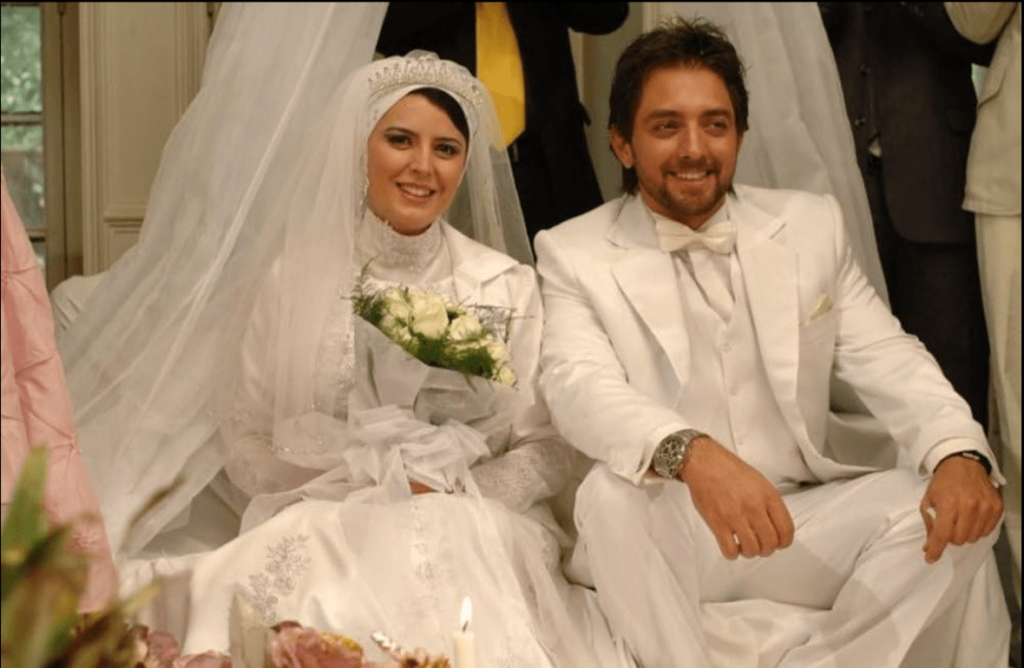
Over the years, the ancient wedding ceremonies have evolved and merged with Islamic traditions, which have formed a modern set of Persian wedding traditions. The following traditions have roots in ancient Zoroastrian traditions and other customs from neighboring cultures.
Here are 15 Persian wedding traditions that have been practiced in Iran over the past century, or more:
1. Khastegāri (Proposal Ceremony)
The journey to a Persian wedding begins with the Khastegāri ceremony. Khastegāri is the traditional courtship process where the groom’s family visits the bride’s family to seek her hand in marriage.
During khastegāri, the groom’s family brings gifts such as flowers and sweets to the bride’s family, symbolizing their respect and goodwill. The bride’s family then offers tea and refreshments, creating a warm and welcoming discussion atmosphere.
The act of serving tea by the bride-to-be is a display of her mannerisms and includes intricacies such as who should be served first, how to address the proposer’s family, etc. Next, the families discuss their conditions, financial status, and the amounts of the Jahizieh (dowry) and Mehrieh (marriage settlement amount).
If the initial process is successful, the boy and girl speak privately (sometimes in the presence of one of the girl’s family members). They discuss their hopes, ambitions, and expectations.
2. Mehr Boran and Baleh Borān (Pre-Engagement Ceremony)
In the past, if the proposal ceremony was successful, it was followed by Mehr Boran or Kharj Boran (for men) and Baleh Borān (for women) attended by the family elders. Today, the process is slightly different, and the elders of both families gather during a single Baleh Boran ceremony. In this event, the families finalize the amount of the dowry, the marriage settlement, and Shir Baha (the gift to the bride’s mother for raising her). Then the groom’s family offers a Neshan ring (mark) that symbolizes their commitment to marriage.
Next, the families agree on a date for the Aghd and Aroosi. Sometimes the two events are held on the same day. In other cases, the families set a small Aghd ceremony, and the couple remains engaged to get to know each other better or have the financial capacity for the wedding and married life. In such cases, the wedding date will be decided later. For the meanwhile, the couple and their families engage in tasks to prepare for their new life together. While the bride’s side traditionally offers support in gathering household items and appliances, the groom often focuses on securing a comfortable home.
Sometimes, unforeseen events lead to a breakup, and the wedding ceremony never occurs. In that case, the families return the gifts and part ways.
Aghd: Signing the Marriage Contract, or Engagement Ceremony
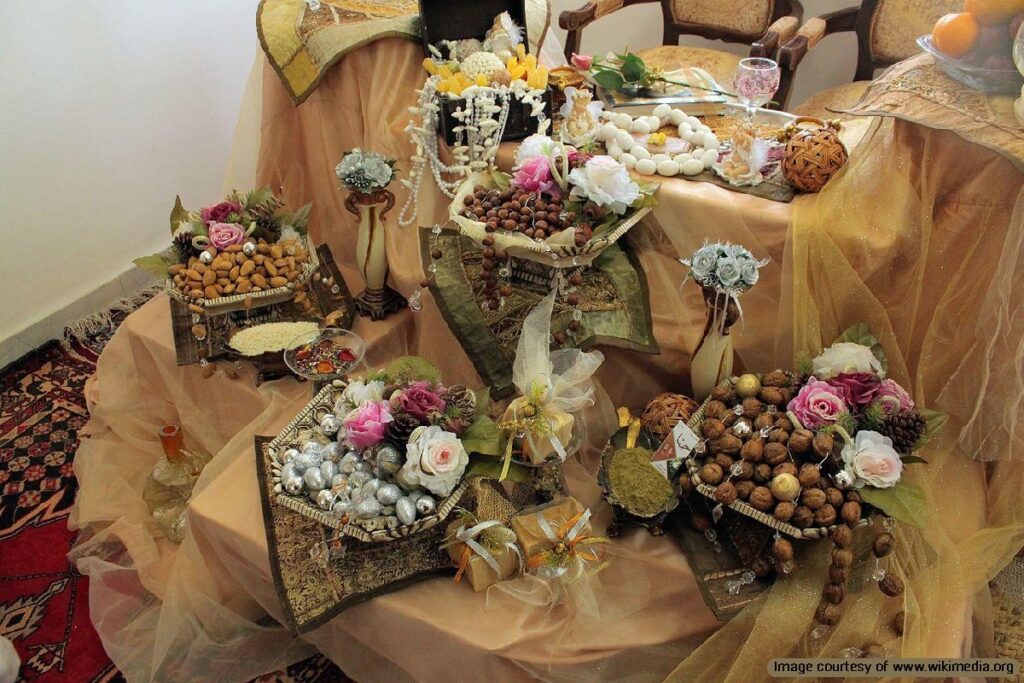
The Aghd is a significant part of Persian wedding traditions, where the Islamic marriage contract is signed. This ceremony is often held in a beautifully decorated setting, with the couple seated in front of the Sofreh Aghd. The Aghd ceremony includes the reading of the marriage contract, which outlines the rights and responsibilities of both the bride and groom. This ceremony is smaller than the main wedding ceremony and is held in the presence of close family members.
The Aghed (officiant), usually a religious or civil figure, reads the contract aloud. The bride and groom should say Baleh (yes) to enter the contract. Before the bride consents on the first try, the people from her family shout: “Aroos Rafte Gol Bechine” (the bride has gone to pick flowers), which means the question must be asked again. This signifies the bride’s value, and thus her hesitation in making such a big decision.
In recent years, a modern Aryan marriage vow has been popularized among Iranians, which is supposedly based on the ancient Zoroastrian marriage ceremony. However, it is a mimicry of the Western wedding vows that has been Persianized and has no proven history.
The couple signs it in the presence of their families and witnesses. This ceremony symbolizes the formal and legal union of the couple, and it is often accompanied by prayers and blessings for a happy and prosperous marriage.
The Aghd ceremony has special traditions such as:
3. Sofreh Aghd: The Wedding Table
Sofreh Aghd is the centerpiece of a Persian wedding ceremony. This elaborate spread includes symbolic items such as a mirror, candles, honey, and various herbs and spices. Each item on the Sofreh Aghd represents different aspects of life and marriage, such as light, sweetness, and protection from evil.
The mirror and candles symbolize light and fire, guiding the couple through their married life. The honey represents sweetness, while Espand is believed to ward off evil spirits and bring good fortune. The Sofreh Aghd is often decorated with beautiful fabrics, flowers, and other ornaments, making it a stunning focal point of the ceremony.
4. Ayeneh and Shamdoon: Mirror and Candelabras
The Ayeneh (mirror) and Shamdoon (candelabras) are essential elements of the Sofreh Aghd. The mirror represents eternity, while the candelabras symbolize light and fire, guiding the couple through their married life.
The Ayeeneh and Shamdoon are often beautifully decorated with flowers and ribbons, adding to the elegance of the Sofreh Aghd. During the ceremony, the couple looks into the mirror, symbolizing their future together, while the candelabras are lit to bring light and warmth to their marriage.
5. Kaleh Ghand: Sugar Cones
During the ceremony, two sugar cones, known as Kaleh Ghand**, are rubbed together over the couple’s heads to symbolize sweetness and happiness in their marriage. The sugar cones are often decorated with ribbons and flowers, making them a beautiful addition to the Sofreh Aghd. This tradition is believed to bring sweetness and joy to the couple’s life, ensuring a happy and harmonious marriage. The Kaleh Ghand is often performed by close family members or friends, adding a personal and meaningful touch to the ceremony.
6. Ghand Sabi (Sugar Grinding) in Iranian Weddings
One of the most enchanting traditions in Iranian weddings is the Sugar Grinding Ceremony. During this ritual, two small sugar cones are ground together over a white cloth held above the bride and groom’s heads. This act symbolizes the showering of sweetness and joy upon the newlyweds.
Typically, this ceremony is performed by unmarried women or newlywed brides, as it is believed that their involvement brings additional happiness and prosperity to the couple’s life. The tradition has deep roots in ancient Iranian customs and is seen as a way to invoke the presence of divine love and friendship during the wedding. This beautiful ritual not only adds a touch of cultural richness to the wedding but also serves as a heartfelt blessing for the couple’s future together.
7. Hanabandon (Henna Night)
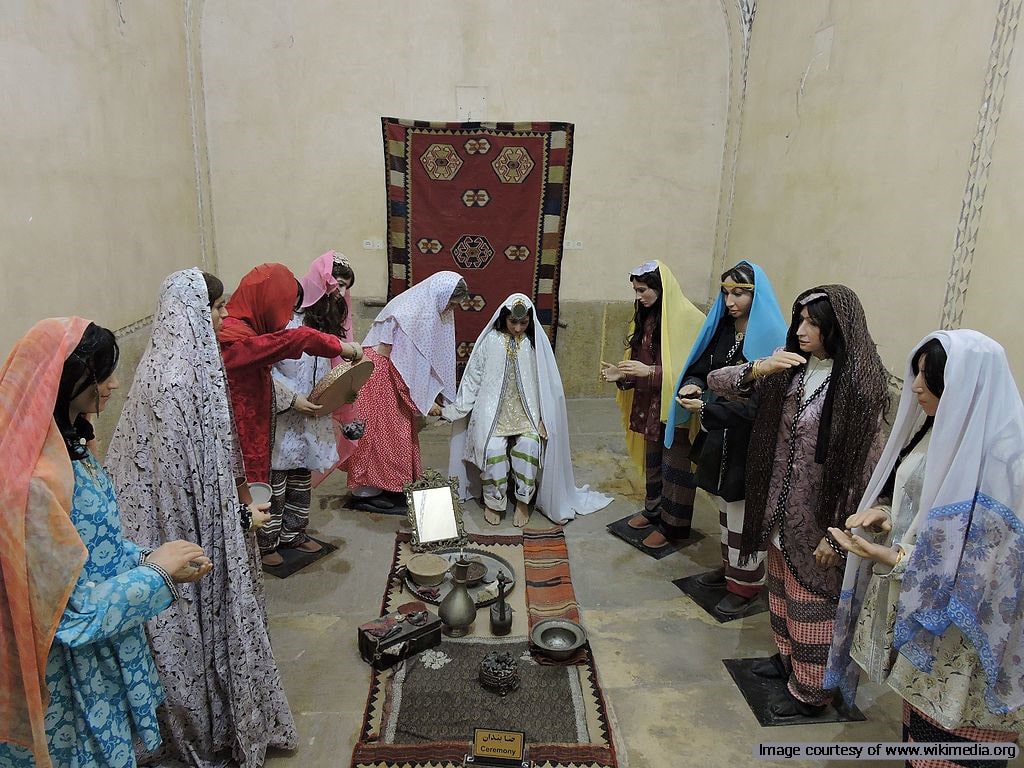
Hana Bandoon is a pre-wedding celebration where the bride’s hands and feet are adorned with intricate henna designs. This tradition is believed to bring good luck and protect the bride from evil spirits.
The henna night is often a lively and festive event, with music, dancing, and feasting. The bride’s friends and family gather to celebrate and apply henna to the bride, creating beautiful and intricate designs. The henna is typically made from natural ingredients, such as henna leaves and essential oils, ensuring a safe and beautiful application.
8. Jashn e Aroosi: The Wedding Ceremony
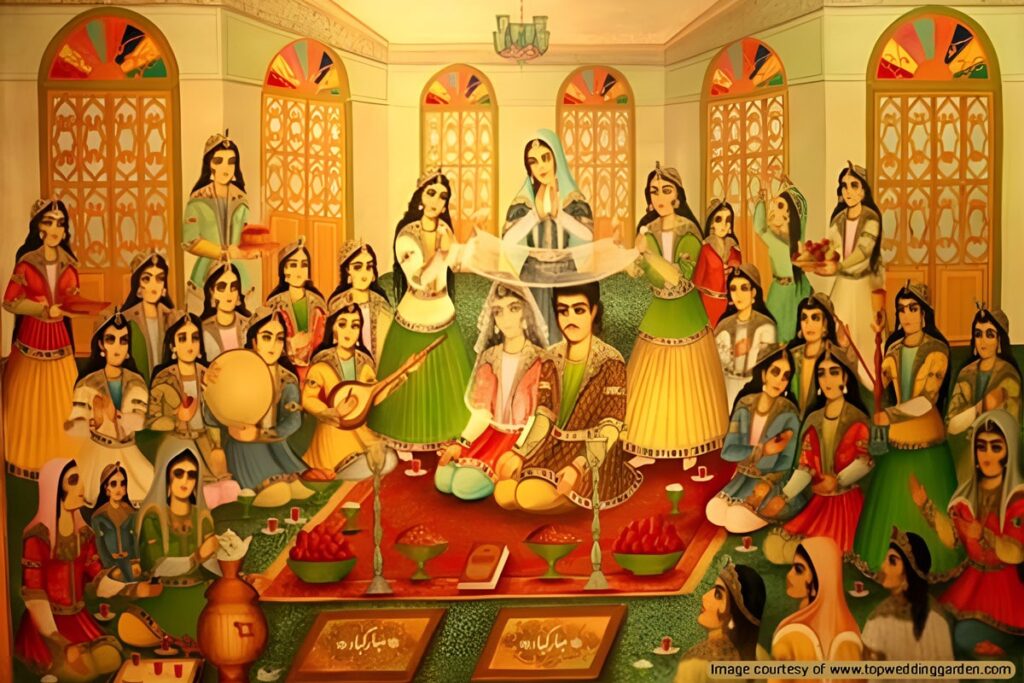
Jashn e Aroosiis the wedding reception, a grand celebration filled with music, dancing, and feasting. Persian weddings are known for their lively and joyous receptions, where guests celebrate the newlyweds with traditional music and dance.
The reception often features a live band or DJ playing a mix of Persian and contemporary music, encouraging guests to dance and enjoy the festivities. Traditional Persian dishes, such as kebabs, rice, and stews, are served, along with sweets and desserts. The Jashn e Aroosi is a time for the couple and their guests to celebrate their union and create lasting memories.
There are several traditional practices during the wedding ceremony, which we will describe below:
9. Raghse Chaghoo: The Knife Dance
The Raghse Chaghoo or knife dance is a playful tradition where the bride and groom’s friends and family dance with a knife, teasing the couple before finally handing it over to cut the wedding cake. This dance adds a fun and interactive element to the celebration, as guests take turns dancing with the knife and demanding a “ransom” from the groom before giving it to him.
The groom often offers money or small gifts to the dancers, creating a lively and entertaining atmosphere. The Raghse Chaghoo is a highlight of the reception, bringing laughter and joy to the celebration.
10. Kell Keshi: Persian Wedding Ululation
During the Aghd ceremony, the officiant asks for the couple’s consent to marry. This part of the ceremony, known as Kell Zadan or Kell Keshidan, is often filled with playful banter. The bride traditionally takes her time to respond, creating a moment of suspense and excitement. This delay is often accompanied by the guests playfully urging the bride to say “yes,” adding to the festive atmosphere. Once the bride gives her consent, the groom is asked the same question, and his prompt response is met with cheers and applause from the guests.
11.Gol Baroon: Petal Toss
During the wedding ceremony, guests shower the couple with flower petals in a tradition known as *Gol Baroon. This act symbolizes blessings and good wishes for the couple’s future. The petals are often rose petals, which are believed to bring love and happiness to the couple.
The petal toss often includes tossing Noghl (Persian sweet)is a beautiful and symbolic gesture, creating a romantic and festive atmosphere during the ceremony. Guests often take photos and videos of this moment, capturing the joy and beauty of the celebration.
12. Burning Esfand
Esfand (Espand) is a mix of herbs and spices burned to ward off negative energy and the evil eye. This tradition is an important part of Persian culture and is often performed during weddings to protect the couple from harm.
The Esfand is typically burned in a small brazier or dish, and the smoke is wafted around the couple to cleanse them of any negative energy. This ritual is believed to bring good luck and protection to the newlyweds, ensuring a happy and prosperous marriage.
13. Persian Wedding Songs and Chants
Traditional Persian wedding songs play a significant role in the celebrations. These songs, often accompanied by live music, add to the festive atmosphere and encourage guests to join in the dancing. The music is typically a mix of traditional Persian melodies and contemporary hits, creating a lively and enjoyable soundtrack for the wedding reception.
Guests often sing along and dance to the music, creating a joyful and celebratory atmosphere. The bride and groom often have a special song for their first dance, adding a romantic and memorable moment to the celebration.
The most famous traditional Persian Wedding Chants Include:
- “Mobarak Baad”: This is a traditional congratulatory chant sung by guests to wish the couple a happy and prosperous marriage.
- “Aroos-e Ghashang-e Man”: A joyful chant celebrating the beauty of the bride, sometimes chanted as “Aroos Cheghad Ghashange” (How beautiful is the bride).
- “Shah Damad”: A traditional song praising the groom, often sung during the groom’s entrance.
- “Dokhtar-e Darya”: A song celebrating the bride’s beauty and grace.
- “Shabe Eshgh”: A romantic song that highlights the love between the couple.
- “Gol-e Sangam”: A song that symbolizes the strength and resilience of the couple’s love.
- “Ey Del”: A soulful song that reflects on the emotional journey of love and marriage.
14. Wedding Gifts and Shabash (Shadbash)
Guests at Persian weddings often bring wedding gifts for the couple, which are typically presented during the reception. These gifts can range from household items to monetary contributions, helping the couple start their new life together.
The gifts are often beautifully wrapped and presented to the couple, adding to the festive atmosphere of the reception. The couple typically opens the gifts after the wedding, expressing their gratitude and appreciation to their guests. The tradition of giving wedding gifts is a meaningful way for guests to show their support and love for the couple, helping them begin their married life on a positive note.
15. Pa Takhti Ceremony
The Pa Takhti ceremony is held after the wedding, where the families present gifts to the bride. This ceremony is meant as a gesture of goodwill by both sides of the family, who wish happiness and good fortune for the newly-weds. This is similar to the Bridal Shower tradition in the Western world.
Learn More About Iranian Traditions
Persian wedding traditions form a significant aspect of marriage among Iranians. The adherence to these traditions could be a deal-breaker for certain families, and lead to bad blood between the bride and groom families for a long time.
Destination Iran hopes you have a better understanding of this part of our intangible cultural heritage. Persian wedding traditions are different in Iranian cities and villages, so in order to get first-hand experience, you need to attend one.


